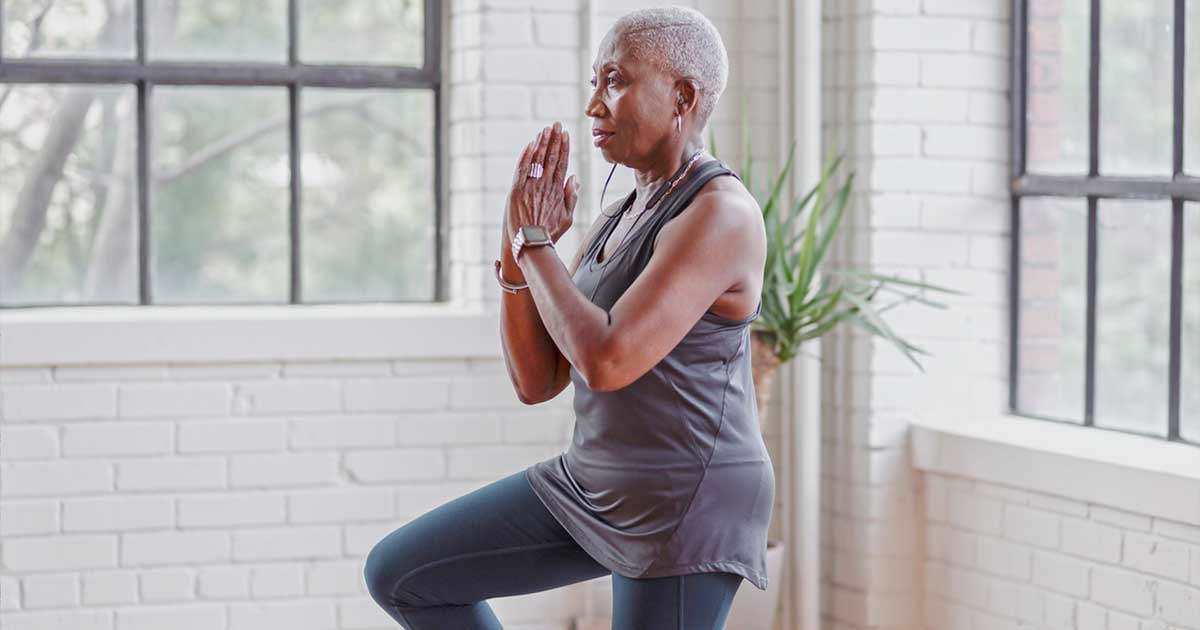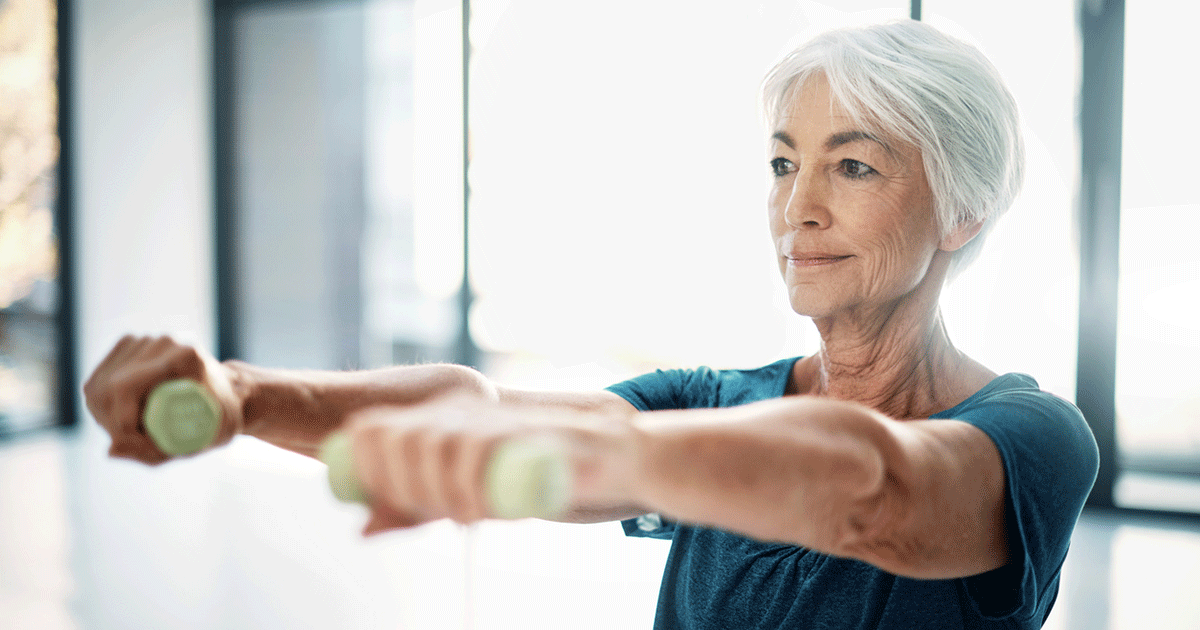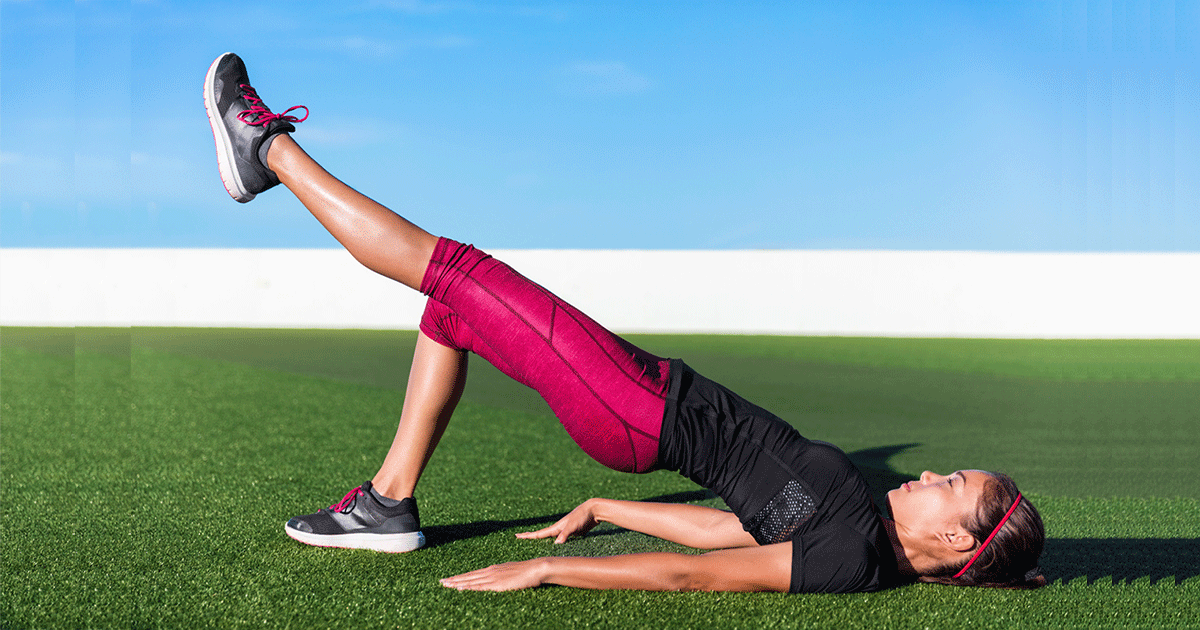What Is Gluteal Tendinopathy and Why Is It Common in Women?
Advice to improve your movement, fitness, and overall health from the world's #1 in orthopedics.
Hip pain keeping you up at night? If you’re a woman at a particular point in life, the cause might be a condition called gluteal tendinopathy—which could in turn be related to menopause. “Many women assume hip pain is from arthritis or bursitis,” says Ellen Casey, MD, a women’s sports medicine physician in the Women’s Sports Medicine Center at HSS. “But a common source of lateral [side] hip pain in peri- or postmenopausal women is gluteal tendinopathy.”

Gluteal tendinopathy is caused by a disorganization of collagen fibers in the tendons that connect the muscles of the buttocks to the bones of the pelvis and thigh. This is unlike arthritis, which is the result of damaged cartilage, and bursitis, which is caused by inflammation of fluid-filled sacs called bursa. An underlying cause of gluteal tendinopathy is a lack of strength and stability of the hip muscles, says Dr. Casey.
Here, she shares some insights into what might be happening to your hips—and the steps you can take to seek relief.
The connection between menopause and hip pain
Menopause has been referred to as “the change” for many reasons. For one thing, there’s a drop in the body’s levels of estrogen, a hormone that may help keep tendons healthy. As we age, we also naturally lose muscle mass. And we produce less collagen, a protein found in connective tissue like cartilage and tendons.
Lifestyle changes, such as moving to a smaller home, changing careers or being less active on weekends, may increase losses in strength and balance. And carrying weight differently, especially in the belly area, may affect posture and body movements. Experts aren’t sure what the direct cause of gluteal tendinopathy is, but they do know what helps to offer relief.
It’s also possible that you do have bursitis or arthritis, says Dr. Casey—which is why if you’re suffering from hip pain and you’re around menopausal age, a professional diagnosis is an important first step.
“Hip pain can have any number of causes,” she adds. “For example, some people have problems with the spine that show up as hip pain. The treatments for each type of hip pain are different, so step number one is finding out the source of the pain so we can treat that specific cause.”
What is gluteal tendinopathy?
As mentioned, gluteal tendinopathy affects the tendons that connect the gluteal (buttock) muscles to the pelvis and thigh bones. When your muscles contract, the force transfers through the tendons to pull on the bones, making that body part move. Exercise causes tendon breakdown, which your body rebuilds when you rest. But if you break down more than you build up, you can develop inflammation (swelling) and pain, often called tendonitis.
What’s more, sometimes during the rebuilding process, the collagen fibers that make up tendons grow in different directions, not in their preferred straight (organized) pattern. Without treatment, this can turn into a long-term problem called tendinopathy.
This is when patients typically come to see Dr. Casey. “By that point the fibers in the tissue are disorganized and new nerves and blood vessels have grown into that area, and they’re having pain,” she says.
Steroid injections used to be the go-to treatment for presumed bursitis, but that was because it targeted inflammation in the bursa. Treatment for gluteal tendinopathy, on the other hand, needs to target tendon degeneration. “People don’t like to hear that there’s not an overnight fix,” says Dr. Casey. “But with the right education, exercises and some other medicines and interventions, gluteal tendinopathy is very treatable.”
Here are a few steps that she recommends to women, including those looking to prevent this menopause-related problem.
1. Stand on one foot
Many women don’t do a lot of standing on one foot, either at home or in the gym. But that’s the type of move that strengthens the gluteal muscles and tendons, so Dr. Casey does this as often as possible throughout the day. “I do it when I’m brushing my teeth, when I’m standing in line, when I’m typing notes in the office,” she says. “It’s easy to fit this into your day.”
Also look for opportunities to add single-leg balance exercises to your workouts. Some examples are the yoga tree pose, a simple single-leg balance and the running man single leg deadlift.
Dr. Casey notes that this is very different from standing on both feet with one hip jutting out—a common habit that makes hip pain worse. When you’re standing on both feet, try to keep your legs shoulder-width apart and your weight equally distributed. Also avoid sitting with your legs crossed.
2. Prioritize strengthening over stretching.
Often, women report that their hips feel tight, and stretches like the Supine Figure Four Stretch may feel good. But they’re not going ease this particular type of pain.
“Gluteal tendinopathy isn’t really a flexibility issue. Women tend to have a greater range of motion in the hips than men do,” says Dr. Casey. In fact, this flexibility may mean you require even more strength to keep your hips stabilized. “While it’s great if you can do both, if you’re only going to do one thing, pick strengthening over stretching.”
3. Side sleeper? Add a pillow or two.
Sleeping on your side may feel natural to some people, but it can put pressure on the gluteal tendons of the bottom leg or cause stretching of the gluteal tendons of the upper leg, either of which can increase hip pain.
There’s a simple solution for those who can’t sleep on their back: Put a pillow between your legs and another between your ankles. Or look for a long, contoured pillow that’s designed just for this purpose.
4. Get medical help.
Ideally, you’d seek medical advice before the pain becomes too much to bear. It can take eight weeks or more of physical therapy to build enough strength and stability to find relief from gluteal tendinopathy. But some patients come to Dr. Casey in such pain that they can’t sleep or exercise. In that case, she may recommend additional treatments, including medications, shockwave therapy or injections to reduce pain and set the stage for success with physical therapy exercises. (Note that insurance usually covers PT, medications and some injections, but other therapies may not be covered.)
5. If you do need PT, follow your plan to the letter.
Ideally your rehabilitation plan will include a variety of exercises—seated and standing—to mimic the types of body positions and movements that happen in everyday life. Your PT will also give you clear direction and hands-on guidance to help ensure you’re doing the moves correctly. For example:
- Side-lying leg lifts: Lie on your side with your hips stacked on top of each other and both legs straight. Lift and lower the top leg slowly, keeping the knee straight and slightly behind the bottom leg. Repeat on the other side.
- Monster walk (side steps): Stand with your feet about hip-width apart, knees slightly bent and toes facing front. Place a resistance band just above your ankles. Keeping your core tight, side-step to the left a few times, then to the right, returning to the starting position. Repeat for several sets.
“While other lifestyle changes and treatments can be helpful, it’s the strengthening exercises that you’ll learn with a physical therapist that are most important,” says Dr. Casey. “That’s how you’ll improve the strength of the gluteal muscles and tendons, which in the long run is the ideal treatment."



